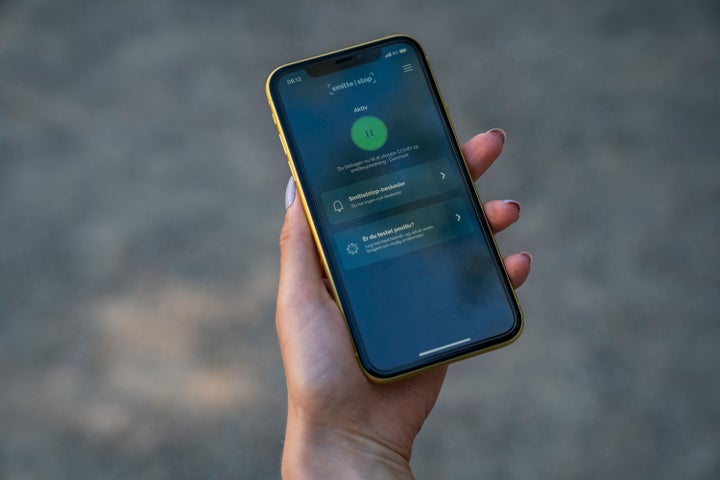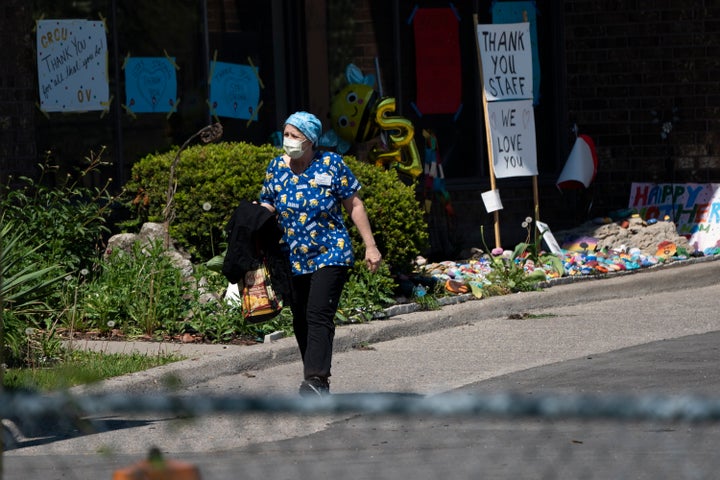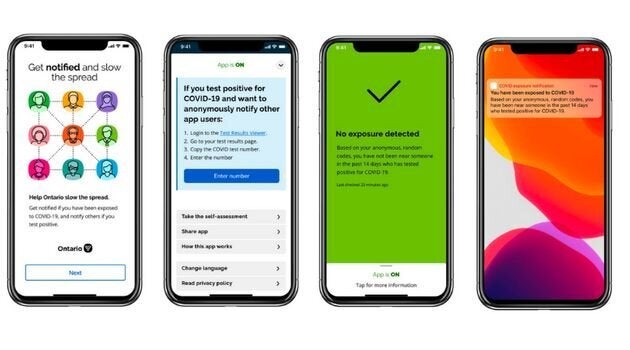
OTTAWA — The federal government’s endorsement of a contact tracing app raises concerns about equity in health care because the group with the highest risk of serious COVID-19 infection uses smartphones the least.
Last week, Prime Minister Justin Trudeau and Ontario Premier Doug Ford promoted a smartphone app to help contact tracing efforts to contain the spread of COVID-19. The exposure-notification tool is expected to be available for download as early as July 2.
Dr. Richard Lester, an infectious disease and digital health expert and associate professor at the University of British Columbia, said the efficacy of the app depends on the user.
“Just because you have a smart phone doesn’t mean you can manage an app,” he told HuffPost Canada. “And we know that sometimes half the people who download an app, the minute they have a challenge managing their password, they stop using it and they don’t keep using it.”
Watch: Ontario to pilot COVID contact tracing app. Story continues after video.
According to Statistics Canada, 88 per cent of Canadians have a smartphone. But trendlines differ depending on age.
Ninety-eight per cent of Canadians between the ages of 15 and 24 have a smartphone, whereas 60 per cent of seniors over the age of 65 have the devices.
In January, Lester conducted clinical research at Vancouver General Hospital to test a digital health app designed to monitor discharged patients who are self-isolating and to help them from getting readmitted.
After they left the hospital, patients received texts every day for two weeks. They were asked open-ended questions probing how they were feeling and if they had any new symptoms to report.
His team found though 95 per cent of patients had access to mobile phones, only 70 per cent had smartphones.
This presented an obvious gap. The digital health app, though useful, was biased against older, sicker patients with comorbidity in hospitals — which is the exact segment of the population most vulnerable to serious and life-threatening cases of COVID-19.
People aged 60 and over accounted for 94 per cent of Canada’s COVID-19 deaths, according to data released by the Public Health Agency of Canada earlier this month. Eighty-two per cent of the country’s deaths are linked to outbreaks in long-term care and seniors’ homes.

There are ways to close the digital health gap, but solutions vary according to a patient’s family and social situation.
Lester said often there are household members who can share a phone with the patient. And in cases where a patient is elderly or has English as a second language, they may be reliant on a family member or friend to act as a proxy.
The infectious disease expert said digital health apps are often promoted by people who look at themselves as the end user, which is a bias that can inadvertently create barriers.
“Public health is about equity,” he said. “It’s about closing the gap as much as possible.”
Medical journal suggests increase access to Bluetooth smartphones
Developed by the Ontario Digital Service and Shopify, the soon-to-be-released government-backed contact tracing app uses a framework created by Apple and Google.
On Thursday, Trudeau called it an “extra layer of protection” to work in concert with other public health measures. He said participation is “completely voluntary,” but stressed the more people who use it, the more effective it will be.
Blackberry Ltd. has also been recruited to test and review the new app.
The Bluetooth-based app is designed to detect the duration and proximity of exposure to an infected person by detecting when two devices are close to each other.
People who test positive for COVID-19 will be given a verification code to voluntarily update the app. An alert is then sent to devices that have been close to the device belonging to the infected person.
The app does have a blind spot: not everyone who contracts COVID-19 will seek a test. So no test, no verification code, no alert to a person’s social network warning about potential exposure.
Similar apps using Bluetooth have been used in Alberta, Australia, and Singapore, according to the Canadian Medical Association Journal.

The decision to use Bluetooth addresses some privacy concerns over contact-tracing apps that use Global Positioning System (GPS) data to track a person’s movements, and who has access to that detailed information.
The peer-reviewed medical journal suggested in a June article that affordable devices be made available to help close the smartphone ownership gap.
“To ensure equitable access and to enhance the effectiveness of contact tracing, governments should provide low-cost devices to individuals without Bluetooth-enabled smartphones,” reads the paper written by Robert Kleinman and Colin Merkel.
In British Columbia, recognizing the most vulnerable people to COVID-19 may not have smartphones to stay connected during the pandemic, the provincial government partnered with non-profit organizations to distribute 3,500 devices to people who are homeless.
Traditional contact tracing involves interviews with public health officials to identify who may have been exposed to an infected person. It’s time-consuming, but is regarded as a highly successful method of reducing infection transmissions.
“The success of digital contact tracing will depend on access to diagnostic testing, widespread adoption and the ability of the underlying technologies to identify exposures.”
Kleinman and Merkel stressed the importance of integrating digital apps with traditional contact tracing as the optimal path forward to “leverage the advantages, and mitigate the limitations, of each approach.”